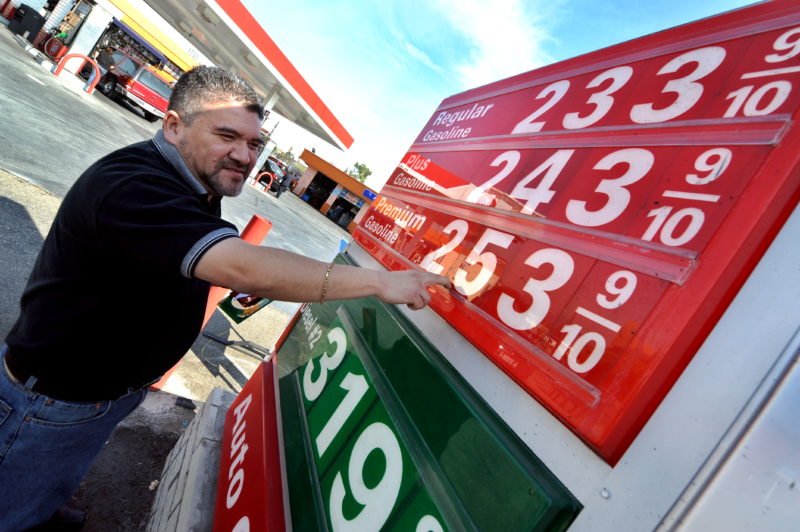Amid trade war, US consumers, industry falter in August, dimming outlook
Falling energy prices kept a lid on a key measure of US inflation in August (JEWEL SAMAD)
Washington (AFP) – US consumer spending slowed sharply in August, according to the latest government data Friday, suggesting turmoil from President Donald Trump’s trade wars was hitting home for the general public.
And in another sign trade tribulations are weighing on American industry, demand for big-ticket manufactured goods also showed unwelcome weakness, economists said.
The new data Friday caused economic forecasters to cut their third-quarter GDP growth estimates sharply, and they also were likely to exacerbate disagreements among US central bankers over the path of interest rates.
Federal Reserve policymakers are increasingly divided over the direction of monetary policy but markets expect they will vote to cut the benchmark lending rate again this year to cushion the trade war’s impact on the economy.
On one hand, a key component of the Federal Reserve’s preferred inflation measure of ticked higher in August for the third month in a row, although it remains below the Fed’s two percent target, according to Commerce Department data. That could bolster arguments against cutting interest rates again.
But on the other hand the decline in consumer spending and weakness in durable goods orders suggest the world’s largest economy is slowing faster than expected, suggesting easier interest rates are needed to boost.
Ian Shepherdson of Pantheon Macroeconomics said Friday said the trade war made consumers “nervous” and is bringing “the consumer boom is coming to an end, rapidly.”
The Commerce Department said disposable incomes adjusted for inflation rose 0.4 percent in August, the biggest increase since February, suggesting consumers have plenty of cash available.
But spending slowed to show a tepid 0.1 percent gain, its smallest monthly pace since February. Compared to the same month last year, the increase was the weakest recorded since December 2018.
– Forecasts slashed –
As a result, savings rose to $1.36 trillion, the highest level since March, meaning American consumers are holding onto their cash.
Meanwhile, August appeared at a first glance to be a better-than-expected month for US manufacturing, with a second straight sales gain for military aircraft and equipment, according to a Commerce Department report.
Together with a boost in sales of primary metals, overall new orders for big-ticket, US-made items rose 0.2 percent, far better than the one percent drop economists had expected.
But the data show other industries had a painful month, with notable declines for civilian aircraft, autos, communications equipment, electronics and appliances.
A measure seen as a proxy for business investment, and a sign of future business activity, also fell in August after recording a flat July.
Taking the developments into account, Macroeconomic Advisers slashed their third-quarter GDP forecast by 0.6 percentage point to 1.6 percent — about half what it was at the start of the year.
Oxford Economics cut their forecast to an even-lower 1.3 percent.
That would be a sharp slowdown in an economy that grew 3.1 percent in the first three months of the year and 2.0 percent in the second quarter.
Elsewhere, tumbling energy prices kept a lid on overall price gains for last month, as the Personal Consumption Expenditures price index was unchanged from July, falling short of economists’ expectations.
Compared to August 2018, the PCE price index, which tracks costs for goods and services purchased by individuals, rose 1.4 percent, holding at the same rate for four months in a row at the same pace and well below the central bank’s two percent target.
When volatile food and fuel prices are stripped out, the “core” price index for August gained a trivial 0.1 percent over July, but rose by a hotter 1.8 percent from a year ago.
That closely-watched measure was fueled by steady gains in the costs of US services which pushed it to its highest level since January.
Disclaimer: Validity of the above story is for 7 Days from original date of publishing. Source: AFP.


